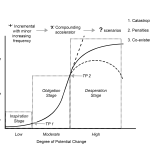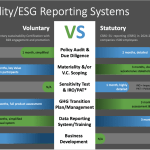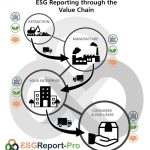ESG - THE BASICS
CO2 MANAGEMENT, OFFSETTING, REDUCTION AND FOOTPRINTS
The language around carbon and the impact that it may have on your organisation can appear to be complicated and contradictory. Let’s start with some simple definitions before digging deeper...

About 2,500kg of CO2 emissions = 1 Fully Grown Pine Tree
Carbon Management
Carbon management refers to the strategic approach taken by organisations to identify, measure, monitor, and reduce their greenhouse gas (GHG) emissions. This involves analysing and managing the carbon footprint of a company’s operations, including energy consumption, transportation, waste management, and production processes. The goal of carbon management is to minimise emissions and improve overall environmental sustainability.
Carbon Reduction
Carbon reduction focuses on actively reducing the amount of GHG emissions generated by an organisation. It involves implementing measures to decrease energy consumption, improve operational efficiency, transition to cleaner energy sources, and adopt sustainable practices. Carbon reduction strategies can include optimising supply chains, implementing energy-saving technologies, promoting recycling and waste reduction, or adopting renewable energy sources. The aim is to decrease carbon emissions at the source and minimise the environmental impact of business activities. Carbon reduction should always be a higher priority for organisations than carbon offsetting.
Carbon Footprint
Refers to the total amount of greenhouse gas (GHG) emissions, primarily carbon dioxide (CO2), that are directly or indirectly produced by an individual, organisation, event, or product throughout its life cycle. It quantifies the impact of human activities on the environment in terms of carbon emissions. By calculating and understanding their carbon footprint, individuals or organisations can identify the main sources of GHG emissions and take steps to reduce their environmental impact. This can involve implementing energy-efficient practices, adopting renewable energy sources, optimising transportation, promoting sustainable production methods, and engaging in carbon offsetting initiatives to compensate for unavoidable emissions.
Offsetting
Offsetting, also known as carbon offsetting, involves taking actions to compensate for or neutralise the GHG emissions produced by an organisation or an individual. This is achieved by investing in projects that help reduce emissions or remove an equivalent amount of carbon dioxide from the atmosphere. These projects can include renewable energy initiatives, reforestation efforts, or energy efficiency programs. Offsetting allows organisations to balance their emissions by supporting projects that contribute to a net reduction in global carbon emissions. However, carbon offsetting is considered to be a separate activity to carbon reduction, so organisations should not include offsetting in their calculated carbon footprint.
GOAL #1 - MINIMISE YOUR CARBON EMISSIONS BOTH IN-HOUSE AND THROUGH YOUR VALUE CHAIN
HOW TO COUNT CO2 EMISSIONS?
Your carbon footprint takes into account various activities, including energy consumption, transportation, waste generation, and production processes. It is measured in units of carbon dioxide equivalent (CO2e), which represents the amount of CO2 that would have the same warming effect as the combined emissions of different GHGs.
Direct Emissions (Scope 1)
These are emissions produced from sources directly owned or controlled by an entity, such as burning fossil fuels in vehicles or on-site power generation
Indirect Emissions (Scope 2)
These emissions result from the consumption of energy provided by external sources, such as electricity from the grid, heat, or steam
Other Indirect Emissions (scope 3)
These encompass all other indirect emissions that occur upstream or downstream in the value chain, including emissions associated with the production of purchased goods and services, business travel, employee commuting, and waste disposal
In summary, carbon management involves overall GHG emissions (carbon footprint) management and sustainability efforts, carbon offsetting compensates for emissions by supporting environmental projects, and carbon reduction focuses on actively reducing emissions through various strategies and practices. Reducing carbon footprints is crucial for mitigating climate change and transitioning to a more sustainable future. It contributes to efforts to minimise overall GHG emissions and limit the impact of human activities on the environment. These concepts are interconnected and often work together to achieve environmental goals.




